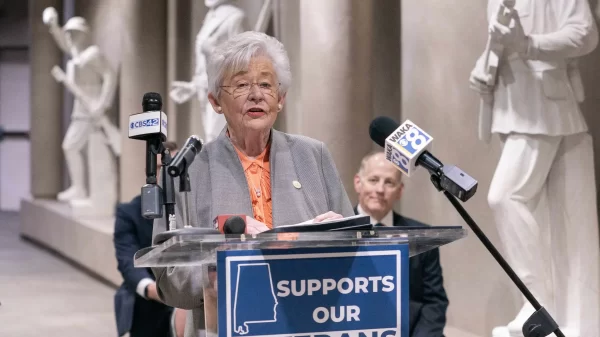|
Getting your Trinity Audio player ready...
|
Alabama’s public schools are funded from three primary sources. The state receives approximately 10 percent of its funding from the federal government through programs like Title I and school nutrition programs. These programs typically support students coming from low-income households.
The next source is local funding. Anywhere between 21 percent to 34 percent of education expenses are funded by local ad valorem property taxes – meaning roughly a third of expenses associated with an area’s public schools are supported at the community level.
Finally, state government makes up the remaining 65 percent to 75 percent by passing the Education Trust Fund Budget each year. The Legislature also includes dozens of line items in the budget for specific education related projects, which include capital improvement projects or pilot programs and allow us to meet the unique funding needs of specific school systems.
For the last 30 years, Alabama has utilized the Foundation Program to determine how much funding we allot to each of our 1,500 schools annually. The program relies upon a formula that takes into consideration each school district’s student population and student grade level.
In short, it’s a resource-based funding model that allocates dollars based on headcount.
To some, this may seem like the fairest way to go about funding public education, but over the years, the shortcomings of this approach have become increasingly more evident.
Let me give you an example.
School A covers a large, rural area in which many children live more than 15 miles away and are almost entirely dependent upon transportation provided by the school system. It also has a large population of English Language Learner (ELL) students and students with disabilities.
School B is in a medium-sized metropolitan area where students are not overly dependent on transportation provided by the system. ELL student numbers are low, and students with disabilities make up a small portion of the school’s enrollment.
Under the current Foundation Program, the specific needs of these two schools are not considered.
School A doesn’t receive targeted funding for its ELL and special needs students.
School B still receives dollars for its transportation program even though it doesn’t need money for buses and would like to utilize that funding elsewhere.
The problem here is that state has been funding education with the assumption that student needs in School A and School B are the same simply because they have similar enrollment.
Lamar Alexander, a former U.S Senator from Tennessee who served Secretary of the Department of Education for President George H.W. Bush, summed this up well when he said, “the best decisions about education are made by those closest to the child.”
Alabama is making enormous strides in public education and recently moved up 15 spots in fourth grade literacy and 20 spots in fourth grade numeracy.
This is encouraging, but we must not be satisfied with simply resting in the middle of the pack.
We want to take education in Alabama to the next level, and a one-size-fits-all approach to funding our school systems is not the vehicle to get us there.
The fact of the matter is school needs vary widely from one community to another.
Rigid funding wastes valuable resources.
And flexibility fuels innovation and responsiveness.
Lawmakers need to give schools the financial flexibility to make decisions that best serve the students they educate.
This session, the Legislature is taking action on this issue and implementing a new hybrid funding approach that takes into account the specific needs of each school system.
Under the Renewing Alabama’s Investment in Student Excellence Act, known as the RAISE Act, schools will receive additional funding – referred to as “weights” – based on the number of enrolled students in specific categories, such as low-income, special education, English language learners, gifted students, and those attending charter schools.
This represents a massive step forward in Alabama’s public education, and it’s the result of House and Senate leadership – specifically House Ways and Means Education Chairman Danny Garrett, R-Trussville, and Senate Finance and Taxation Education Chairman Arthur Orr, R-Decatur – meeting extensively with educators, school leadership, and school superintendents to develop a program that works best for them.
My number one mandate was that no school system in the state could lose even a penny of funding under this new approach.
And that will be the case. In fact, most schools will actually gain funding from this proposal.
Public education is at a crossroads in our state.
We can accept our new, middle of the road as the status quo, or we can strive to give students our absolute best every single day.
I visit schools across the state often and have seen firsthand the incredible work happening in the classroom.
I believe in our public schools, teachers, and most importantly, our students.
They deserve our very best – so let’s make sure they’re getting that from us.















































